Welcome back me!
You might be wondering: “Who the heck are you and why are you in my inbox?” Well, I don’t blame you, it’s been over over 2 months since I wrote an article for iRez.
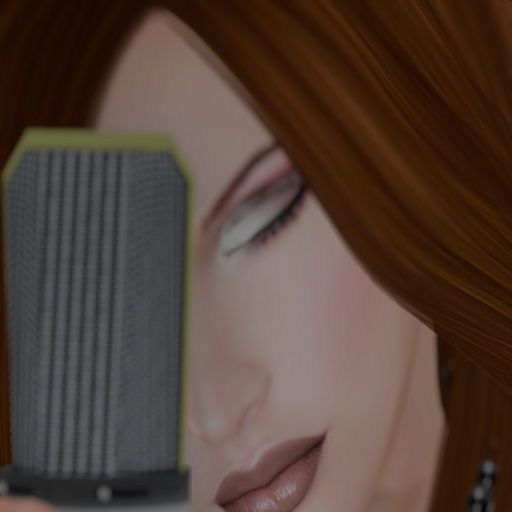
I want to share a whole bunch about what I’ve been doing that’s been keeping me away, but for now I just want to talk a little about my latest interest: singing live in Second Life.
This Saturday at 1:30 SLT, for the first time ever, I’ll be standing in front of an international audience at the Basilique Club in Second Life, and singing for them from my flat in London. Who would have thunk it? So, how did I get here?
I knew from the get go of starting the Basilique, that the usual contests we used to run at our old club just wouldn’t cut it anymore. “Best in (whatever colour)”, “Best in Superhero”, “Best in Latex Unitards”, etcetera, etcetera… well, the alluring interest of these kind of events only lasts so long.
The first idea was to put on a Burlesque Dance performance. The show took a few weeks to prepare and I’ll be documenting how that’s done in another post. It ended up being a great success and we were even invited to take the show out to other locations, which we have and plan to do more of in the future.

Then we had a campfire concert with Harvey Crabsticks. This concert took place in our Campsite and was really well received by both regulars and newcomers to the club alike. Harvey isn’t an experienced performer in Second Life, but he does know his way around getting it done, and did a great job entertaining us!
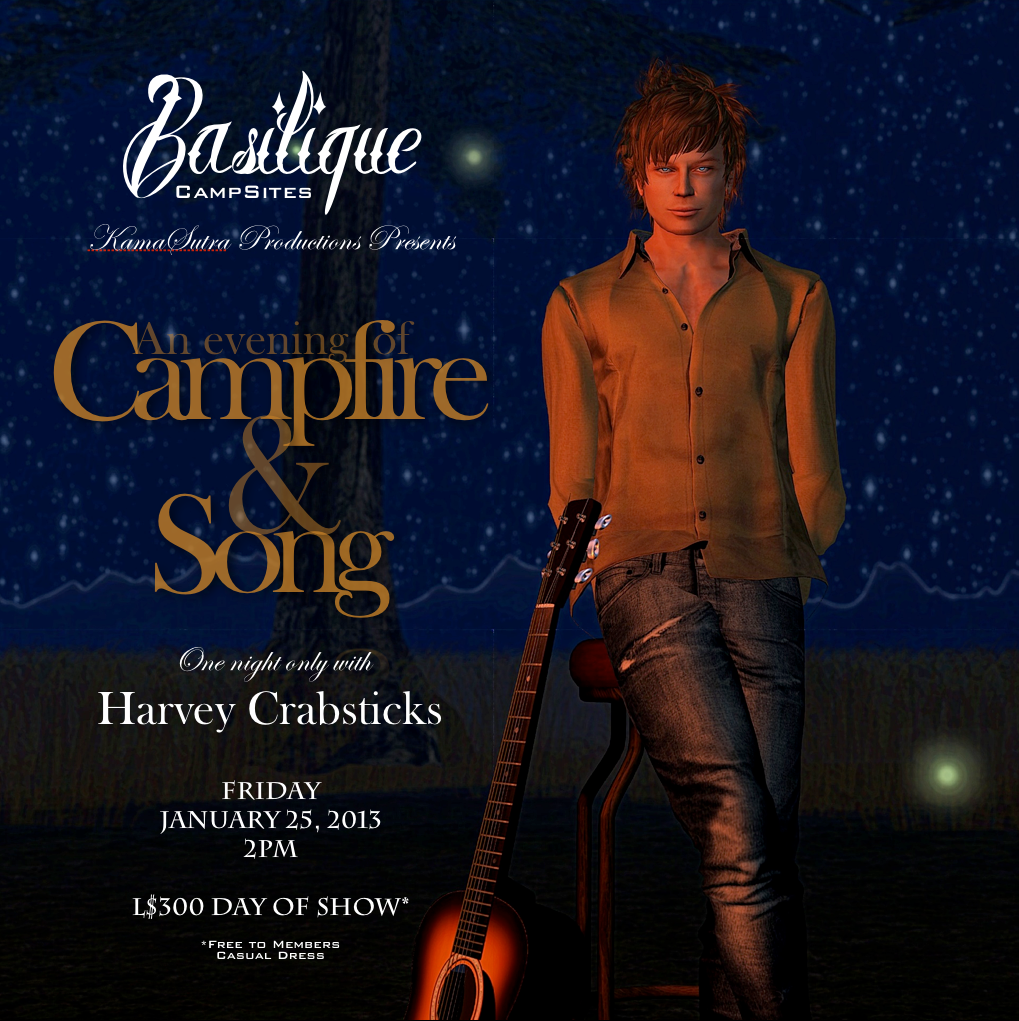
I suppose it was that experience that helped inspire us to the next step: An Open Mic Night.

Step 1. Decide to sing live in Second Life
Inspired by Harvey’s performance, I put myself forward to sing. Apart from singing lessons, both private and in classes, I don’t have a lot of experience performing in front of a group of people by myself. Just deciding to do this was the first step of many.
While the art of singing takes an extraordinary amount of time to master, we all have to start somewhere. So if you can carry a tune, have a reasonable sense of rhythm, and have the confidence to perform, you should feel ready to start.

Step 2. Setting up live streaming
To sing in Second Life, you need to broadcast an audio stream from your computer to the internet. Drawing on my experience as a DJ, getting this part sorted out wasn’t difficult at all. When you DJ, you play songs from iTunes (or another audio application) and this signal is broadcast to the internet through a stream (e.g. Shoutcast) in Second Life. Most venues in Second Life will have their own stream you can hook up to.
Because I use a Mac, my best choice was an application called Nicecast. Once installed, I simply need to set it up with the right stream settings to make my computer into a stream server (all the instructions are provided on the Nicecast site).
Cost: The full version that gives you all the options is $59 USD (Nicecast is a free download).
Step 3. Get the kit for audio input
You can sing in Second Life just by using a headset or built-in laptop microphone. However, you’re doing yourself a disservice if you do, as these options pale in comparison to the quality you can get from something designed for the purpose.
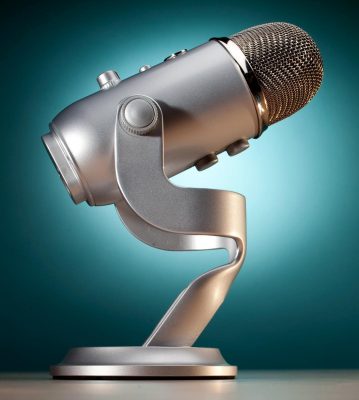
For my microphone, I chose the rather phallic-looking Blue Yeti Standard USB Microphone. It’s not cheap, but it does capture a very rich, high quality sound, so I’m very happy with the purchase. Also, it has the essential Cardoid setting, which is ideal for vocals and helps to exclude surrounding noise. It’s USB, so it just plugs into my Mac – no converters required.
Cost: £111 on Amazon.co.uk
To filter some of the Ssssss sounds I might produce singing into a microphone, I got this Adjustable Pop Filter to attach to the front of it. It arrived today and I still haven’t tried it yet.
Cost = £25 on Amazon.co.uk
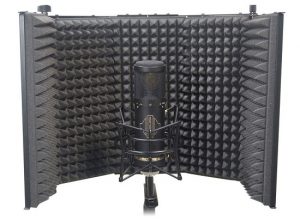
While totally optional, a baffle cuts out the echoes and ambient noise you might get as a consequence of not doing this in a professional studio. I ordered this Essentials Vocal Booth, which will arrive for another couple of weeks.
Cost = £70 on Amazon.co.uk
The Vocal Booth needs to attach to a microphone stand, which I didn’t have (because I didn’t have a microphone!). The Blue Yeti microphone comes with a stand that sits on your desk, and it also has a screw socket for a proper microphone stand, which I ordered from Amazon.co.uk.
Cost = £25
So that’s the kit done. All together, it’s not cheap (about £230). If you’re only doing this once or twice, like I said, you could just get away with the basic mic that is already built into your computer or the same headset mic that you use for voice. This kit however, is an investment that I hope to get a lot of fun out of for many years to come, so it’s worth it for me.

Step 4. Choose your songs and a set list
Now it’s time to choose songs. There’s really no advice I can give you here apart from choosing songs you enjoy and can identify with, ideally with some kind of personal meaning to you, as that will likely come across in your performance.
It’s also a good idea to choose songs that don’t challenge your voice too much at first. Trying to stick within your octave range to start with is a good idea. Usually, trying a song out and getting some feedback will help you know if it’s right for your voice at the moment.
Importantly, whatever song you choose will need to have a commercially available backing track. Search for backing tracks using the name of the song (e.g. “Landslide”) and “karaoke” on iTunes (as above) and you’ll see if you can find one for the song you want. Don’t choose the first demo you hear, as there are several options for every song and some are in different styles and quality. This of course limits you somewhat to popular music, but that’s still a very wide range to choose from. Buy and download the track from the iTunes Store.
Cost: 79p per song.
In terms of a set list, it’s a good idea to choose a variety of songs to keep the audience guessing a bit. I’ve chosen mainly slower ones with some that are bit more up-tempo. I’ve chosen a track from the ’70s rock, folk pop, ’90s indie, and a standard jazz track.
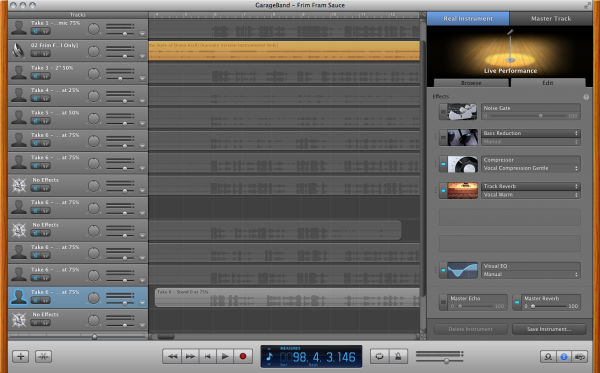
Step 5. Practice (using a digital mixer is optional but extremely helpful!)
Once I got my USB microphone, I plugged it into my computer and launched Garage Band (which comes with all Mac computers). This software enabled me to add the backing track and sing over it on a separate track. I then adjusted the volume levels between my voice and the backing track. This is important because not all tracks are recorded at the same volume, and some need to be dialled up or down to suit your voice better. I was also able to warm and compress my voice, while reducing reverberation, and adding a subtle performance effect that provides the auditory illusion of singing in an amphitheatre, which tends to more closely simulate real life.
The best part about using Garage Band; however, is the feedback you get by recording yourself over and over again, and learning from the playback. Anyone who has practiced singing knows feedback is essential for improvement. Recording and playing back immediately allows you to get such instant and specific feedback that your learning rate increases dramatically. I usually feel I need about 20 practices of each song to make it “ready for primetime”. In this case, I needed only about 5 iterations to feel comfortable. Of course, more practice would always help, but eventually you have to just get up and do it.
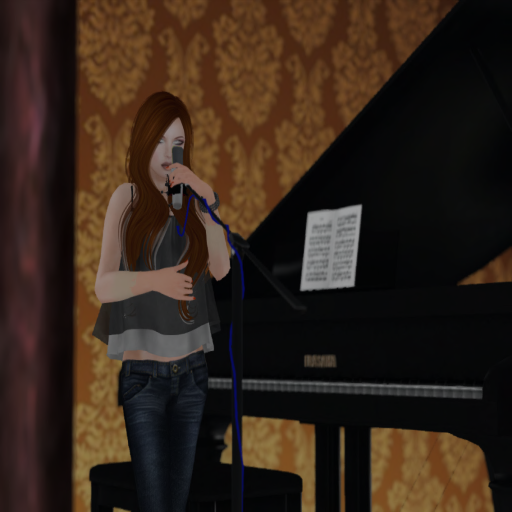
Step 6. Perform!
So here comes the big day! Reading about a performance is really no substitute for hearing it yourself, so I invite you all down to the Basilique on Saturday at 1:30 SLT (that’s a SLurl by the way). I’ll be sharing the stage with three other amateur singers and performing four songs including: Fleetwood Mac’s “Landslide”, Sarah McLachlan’s “Angel”, Jewel’s “You were meant for me” and Nina Simone’s “Summertime”. Attendance is open to everyone and is free of charge. I hope to see you there at my Second Life Worldwide Premier! And for one last picture, here is the play bill:

Oh, and before I leave you, here’s a sneak preview of an early cut I made of my version of Landslide, exclusive to iRez! For the live version of this and all of the other songs, I’ll see you at Open Mic at the Basilique – Saturday at 1:30PM SLT! Enjoy.
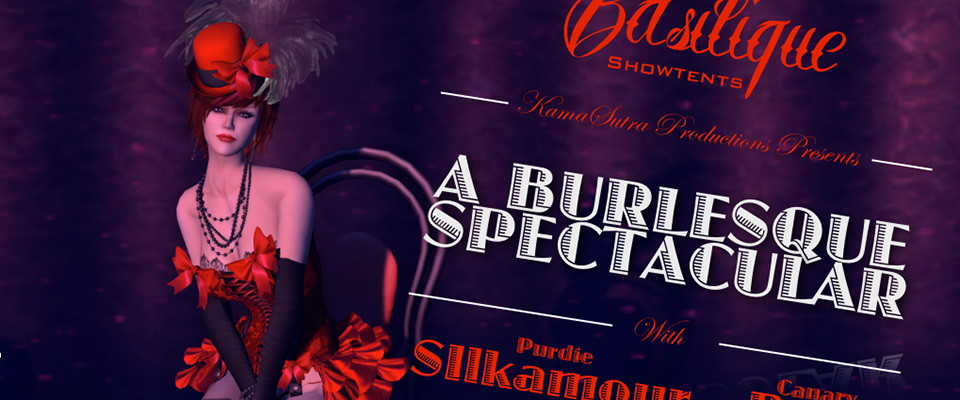
Wow Becky this is fantastic! All your new audio equipment is so awesome! And your posters are also awesome! What a great job you’re doing with everything! I hope you’re getting nice turnouts for these events, and good luck with the open mic today!
Now that you have such cool audio gear, how would you like to read some poems?
I am the new host of Virtual Artists’ Alliance’s “Haiku Sculpting” event. Each week we present a selection of 4 poems that participants use as inspiration to create a sculpture or installation in an hour.
In the past the haiku have often been sublime, ancient, Asian texts, which is pretty great, but I thought it might be nice to try some haiku that are more modern and perhaps Western, so I’ve selected a bunch of haiku from Beth Griffenhagen’s book “Haiku for the Single Girl”.
Would you like to read 4 of them for us? You could make a little youtube video using your voice, and the video could be either of your RL self or your SL avatar, whatever you like.
LMK if you have any questions about it and good luck with all these great projects!
Hey Xue,
Thanks for your comment. And sure, I’d be happy to record a few haikus, can you send a few for me that I can choose from?
Great Becky!
Here’s a bunch, pick any 4 you like:
http://galleryxue.tw/griffenhagen/
And then just do a laptop youtube or however is easiest for you. You can introduce yourself and the author, give a link for your blog, or anything else you’d like to say, and then say something like “here are today’s 4 haiku”…
And then read one… and give us a couple of seconds of “intermission”… you might look down… or close your eyes… or whatever seems good for a couple second pause… and then read the next one… and then pause again after the last one… and hit stop. So the whole thing is probably just a minute or two.
Let me know if you have any questions & TY!
It was a lot of fun meeting you yesterday at the show. 🙂 Great performances and congrats, you have a wonderful voice! It’s not often we find a new place in SL that is both beautiful and friedly. Everyone was so nice and I strongly recommend a visit to the place! Big hugs!
Thank you so much coming Lizzie. And yes! It was great to meet you and party with you as well. I hope you come by again to the Basilique as we all enjoyed having you! All the best and thanks so much for the kind words.
Great post Becky!
Hello Becky,
Thank you for writing this. I want to sing in second life too and I’ve got things set up quite well already.. (except for that foam wall around the mic.. that looks like a great idea to do as well)…
yet I have one big thing that annoys me a lot and I have not yet found a way to work around it.
When I sing in Garageband my vocals are on the tune exactly in time. At the moment I press broadcast My voice gets a delay over the music (latency). This is, as you an imagine, super annoying and it in fact makes not being able to sing live in Second Life.
I wondered if you came across this issue and if yes.. what did you do to prevent the vocal latency and if no… do you still maybe know how to solve the latency?
kindest regards
Moor Noki
Hi Moor, I have come across that problem and I asked someone to help me, and it was resolved, but now that you ask, I can’t remember exactly what they told me to do! I’ll check with them and ask if they remember and they do then I’ll come back to you 🙂
Kind of a necro here, but there’s two ways around it.
Option 1: (potentially expensive) use an external mixer, backing track (from a separate device), any instrumentals and the vocal mic feed the mixer. The main mix out from the mixer goes to the computer perfectly in sync since at that point they are a single track.
Option 2: Use a digital mixer (or the audio controls built into the OS) to mix your backing track with your other audio inputs. Then make absolutely sure your streaming app is set up so it’s capturing from the output side of whatever you are using to mix down your vocals and/or instruments onto the backing track.
Also, DO NOT try to perform listening to the stream. You need to be hearing the backing track locally. The output side of the stream will always have latency. Mute the stream in SL, Use a set of monitor cans fed by your mixer or your computer to hear the mix that is actually going out to your live audience. You need to be singing/playing in sync with what you’re transmitting, not what their machines are receiving.
Thanks a lot for this advice!